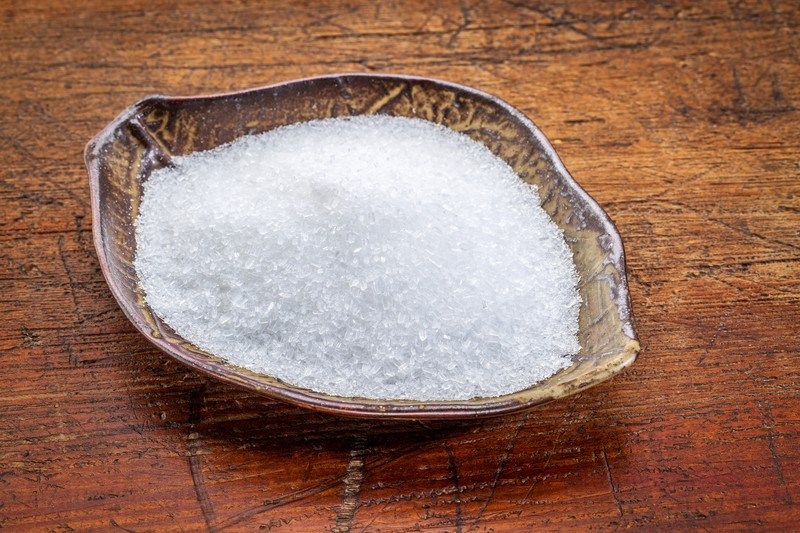This method of stump clearing is not something you can do in a week or even a month – it takes time and persistence.
But if you have both, it is an effective way to make the process much easier on your body, while enriching the soil around the stump for future use.
Why Epsom Salt?
• After a tree has been felled, the root network will continue to feed the stump. Epsom salt is hygroscopic, which means the crystals absorb water. In sufficient quantity, Epsom salt pulls moisture from the wood, which then kills the tree.
Application
• Drill holes in the top of the stump with a one inch spade bit. Start your holes three inches from the perimeter of the stump and keep them three to four inches apart until you run out of room. Bore the holes as deeply as you can–at least eight inches into the base of the stump. Pour 100 percent Epsom salt into the holes and add enough water to moisten the salt. This moisture will carry the salts into the cells of the tree, drying them out.
Then use a mattock or grub hoe to uncover as much as the root structure as you can. Pour a thick layer of Epsom salt on all exposed roots to prevent to roots from carrying moisture and nutrients to the base of the tree.
The entire process will depend on the type of tree and the size of the stump, but generally, it will work over the course of a couple of months.
An intermediate solution is to use this Epsom Salts approach to weaken the tree as it dies and to remove parts of it as they dry out.
To learn more on stump removal as well as applications for Epsom Salts, please visit eHow.

Frankie Caffrey
Ashley Smith
Ya right
Kristine Gibson think this will work? Can’t open it but still
If you’re drilling holes anyway, fill them with mycelium mushroom plugs and have an edible supply of mushrooms!
Teresa Ann Smith
Jon Jon Ogletree
Danny Leon
Drive a piece of copper pipe into the stump with a hammer… it will kill the roots
Regular table salt will do the same thing. Only focus on the outer edge of the stump thats where the stump it still “alive”.